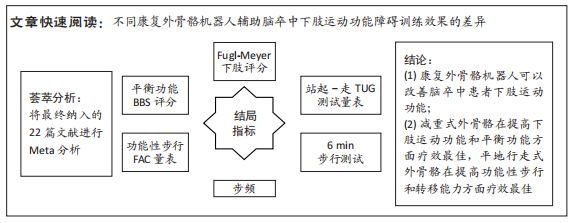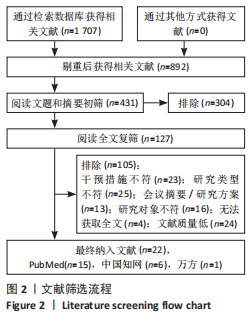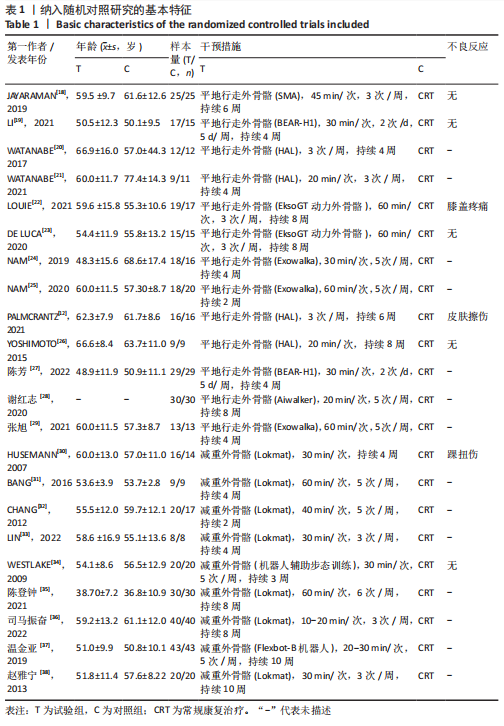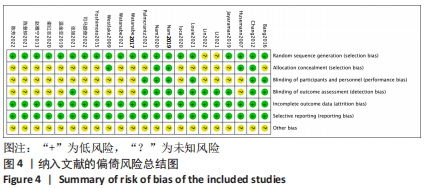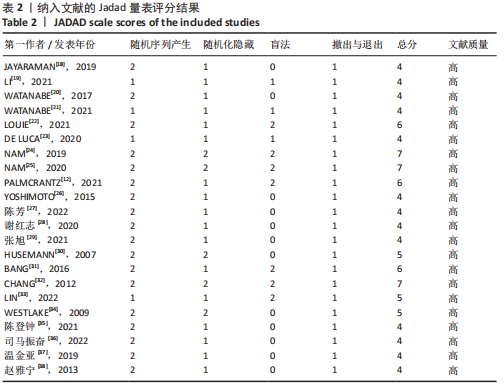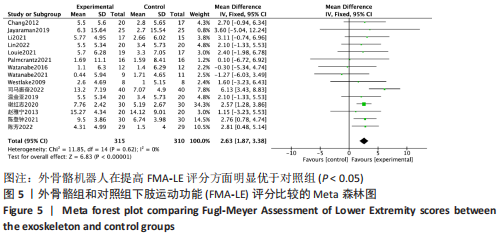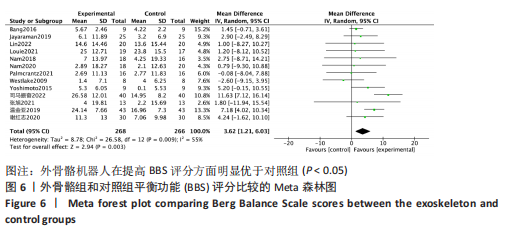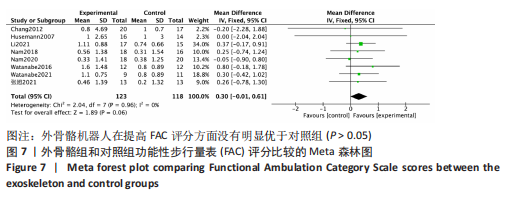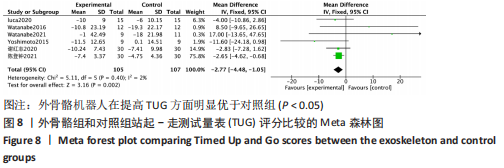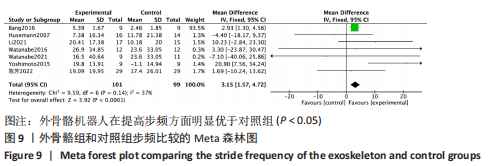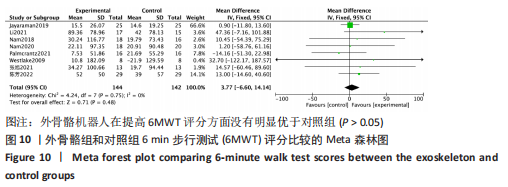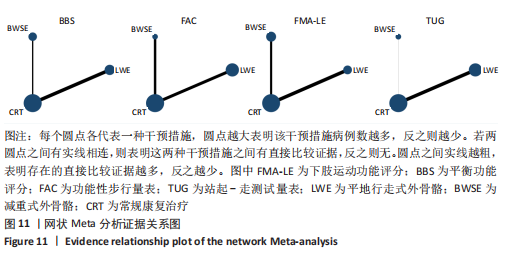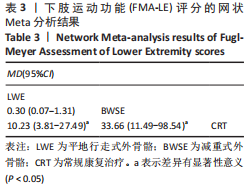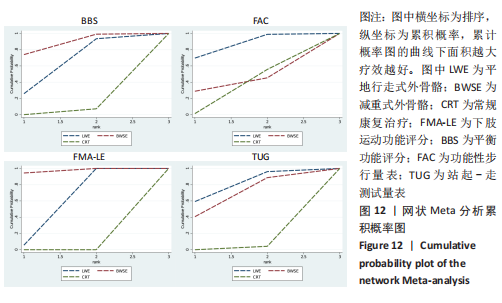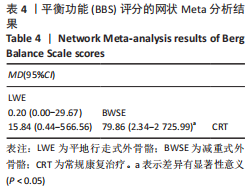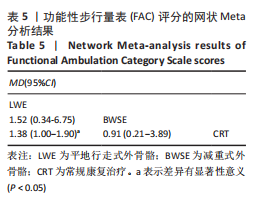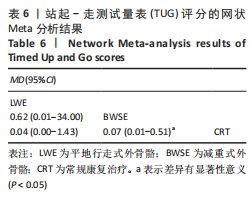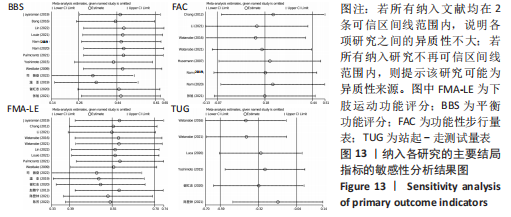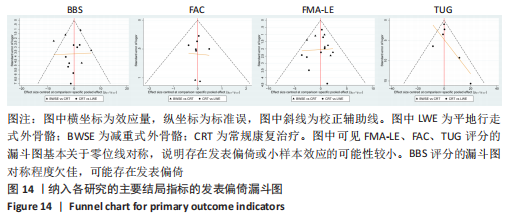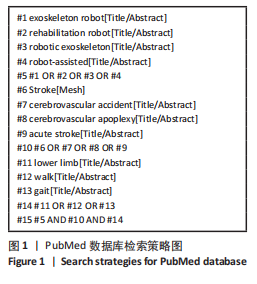[1] FEIGIN VL, KRISHNAMURTHI RV, PARMAR P, et al. Update on the Global Burden of Ischemic and Hemorrhagic Stroke in 1990-2013: The GBD 2013 Study. Neuroepidemiology. 2015;45(3):161-176.
[2] MUKHERJEE D, PATIL CG. Epidemiology and the global burden of stroke. World Neurosurg. 2011;76(6 Suppl):S85-S90.
[3] JøRGENSEN HS, NAKAYAMA H, RAASCHOU HO, et al. Recovery of walking function in stroke patients: the Copenhagen Stroke Study. Arch Phys Med Rehabil. 1995;76(1):27-32.
[4] KOLLEN B, KWAKKEL G, LINDEMAN E. Longitudinal robustness of variables predicting independent gait following severe middle cerebral artery stroke: a prospective cohort study. Clin Rehabil. 2006; 20(3):262-268.
[5] YEN CL, WANG RY, LIAO KK, et al. Gait training induced change in corticomotor excitability in patients with chronic stroke. Neurorehabil Neural Repair. 2008;22(1):22-30.
[6] MIYAI I, YAGURA H, HATAKENAKA M, et al. Longitudinal optical imaging study for locomotor recovery after stroke. Stroke. 2003;34(12):2866-2870.
[7] PORTELLI R, LOWE D, IRWIN P, et al. Institutionalization after stroke. Clin Rehabil. 2005; 19(1):97-108.
[8] SCRIVENER K, SHERRINGTON C, SCHURR K. Exercise dose and mobility outcome in a comprehensive stroke unit: description and prediction from a prospective cohort study. J Rehabil Med. 2012; 44(10):824-829.
[9] FRENCH B, THOMAS L, LEATHLEY M, et al. Does repetitive task training improve functional activity after stroke? A Cochrane systematic review and meta-analysis. J Rehabil Med. 2010;42(1):9-14.
[10] MORONE G, PAOLUCCI S, CHERUBINI A, et al. Robot-assisted gait training for stroke patients: current state of the art and perspectives of robotics. Neuropsychiatr Dis Treat. 2017;13(13):3-11.
[11] BIERNASKIE J, CHERNENKO G, CORBETT D. Efficacy of rehabilitative experience declines with time after focal ischemic brain injury. J Neurosci. 2004; 24(5):1245-1254.
[12] PALMCRANTZ S, WALL A, VREEDE KS, et al. Impact of intensive gait training with and without electromechanical assistance in the chronic phase after stroke-a multi-arm randomized controlled trial with a 6 and 12 months follow up. Front Neurosci. 2021;15:660726.
[13] MEHRHOLZ J, THOMAS S, WERNER C, et al. Electromechanical-assisted training for walking after stroke. Cochrane Database Syst Rev. 2017; 5(5):Cd006185.
[14] MOUCHEBOEUF G, GRIFFIER R, GASQ D, et al. Effects of robotic gait training after stroke: a meta-analysis. Ann Phys Rehabil Med. 2020;63(6):518-534.
[15] MEHRHOLZ J, POHL M, KUGLER J, et al. The Improvement of Walking Ability Following Stroke. Dtsch Arztebl Int. 2018;115(39):639-645.
[16] 杨旭,马秋平.下肢康复机器人辅助训练改善脑卒中病人下肢功能效果的Meta分析[J].循证护理,2018,4(8):673-679.
[17] 各类脑血管疾病诊断要点[J].中华神经科杂志, 1996(6):60-61.
[18] JAYARAMAN A, O’BRIEN MK, MADHAVAN S, et al. Stride management assist exoskeleton vs functional gait training in stroke: a randomized trial. Neurology. 2019;92(3):e263-e273.
[19] LI DX, ZHA FB, LONG JJ, et al. Effect of robot assisted gait training on motor and walking function in patients with subacute stroke: a random controlled study. J Stroke Cerebrovasc Dis. 2021;30(7):105807.
[20] WATANABE H, GOTO R, TANAKA N, et al. Effects of gait training using the Hybrid Assistive Limb® in recovery-phase stroke patients: a 2-month follow-up, randomized, controlled study. NeuroRehabilitation. 2017;40(3):363-367.
[21] WATANABE H, TSURUSHIMA H, YANAGI H. Effect of hybrid assistive limb treatment on maximal walking speed and six-minute walking distance during stroke rehabilitation: a pilot study. J Phys Ther Sci. 2021;33(2):168-174.
[22] LOUIE DR, MORTENSON WB, DUROCHER M, et al. Efficacy of an exoskeleton-based physical therapy program for non-ambulatory patients during subacute stroke rehabilitation: a randomized controlled trial. J Neuroeng Rehabil. 2021;18(1):149.
[23] DE LUCA R, MARESCA G, BALLETTA T, et al. Does overground robotic gait training improve non-motor outcomes in patients with chronic stroke? Findings from a pilot study. J Clin Neurosci. 2020;81:240-245.
[24] NAM YG, LEE JW, PARK JW, et al. Effects of electromechanical exoskeleton-assisted gait training on walking ability of stroke patients: a randomized controlled trial. Arch Phys Med Rehabil. 2019;100(1):26-31.
[25] NAM YG, PARK JW, LEE HJ, et al. Further effects of electromechanically assisted gait trainer (Exowalk®) in patients with chronic stroke: a randomized controlled trial. J Rehabil Med. 2020; 52(9):jrm00097.
[26] YOSHIMOTO T, SHIMIZU I, HIROI Y, et al. Feasibility and efficacy of high-speed gait training with a voluntary driven exoskeleton robot for gait and balance dysfunction in patients with chronic stroke: nonrandomized pilot study with concurrent control. Int J Rehabil Res. 2015;38(4):338-343.
[27] 陈芳,季晶,苏彬,等.平地行走式下肢外骨骼机器人对脑卒中患者步行功能的影响[J].中华物理医学与康复杂志,2022,44(6):497-502.
[28] 谢红志,董继革,王战斌,等.下肢外骨骼助行机器人对脑卒中患者运动功能和步行能力恢复的影响[J].中国老年保健医学,2020,18(6):68-72.
[29] 张旭,邱模炎,权范善,等.步行机器人训练对慢性期脑卒中偏瘫患者步行能力的影响[J].中华物理医学与康复杂志,2021,43(1):30-33.
[30] HUSEMANN B, MüLLER F, KREWER C, et al. Effects of locomotion training with assistance of a robot-driven gait orthosis in hemiparetic patients after stroke: a randomized controlled pilot study. Stroke. 2007;38(2):349-354.
[31] BANG DH, SHIN WS. Effects of robot-assisted gait training on spatiotemporal gait parameters and balance in patients with chronic stroke: a randomized controlled pilot trial. NeuroRehabilitation. 2016;38(4):343-349.
[32] CHANG WH, KIM MS, HUH JP, et al. Effects of robot-assisted gait training on cardiopulmonary fitness in subacute stroke patients: a randomized controlled study. Neurorehabil Neural Repair. 2012;26(4): 318-324.
[33] LIN YN, HUANG SW, KUAN YC, et al. Hybrid robot-assisted gait training for motor function in subacute stroke: a single-blind randomized controlled trial. J Neuroeng Rehabil. 2022;19(1):99.
[34] WESTLAKE KP, PATTEN C. Pilot study of Lokomat versus manual-assisted treadmill training for locomotor recovery post-stroke. J Neuroeng Rehabil. 2009;6:18.
[35] 陈登钟,苏小燕,黄祖成.下肢机器人步态训练对脑卒中足下垂患者的疗效观察[J].按摩与康复医学,2021,12(3):7-9, 16.
[36] 司马振奋,龚剑秋,吴月峰.Lokomat训练对脑卒中后下肢痉挛患者步行能力的影响[J].中华物理医学与康复杂志,2022,44(3):209-213.
[37] 温金亚.下肢康复机器人结合康复训练对脑卒中偏瘫患者下肢肌力及平衡功能的影响[J].中国疗养医学,2019,28(11):1163-1165.
[38] 赵雅宁,郝正玮,李建民.Lokomat对脑梗死后偏瘫患者关节活动度及下肢运动功能的影响[J].中华物理医学与康复杂志,2013,35(8):626-629.
[39] VIRANI SS, ALONSO A, BENJAMIN EJ, et al. Heart disease and stroke statistics-2020 update: a report from the american heart association. Circulation. 2020;141(9):e139-e596.
[40] GRAU-PELLICER M, CHAMARRO-LUSAR A, MEDINA-CASANOVAS J, et al. Walking speed as a predictor of community mobility and quality of life after stroke. Top Stroke Rehabil. 2019;26(5):349-358.
[41] MINET LR, PETERSON E, VON KOCH L, et al. Occurrence and predictors of falls in people with stroke: six-year prospective study. Stroke. 2015;46(9):2688-2690.
[42] KLEIM JA, JONES TA. Principles of experience-dependent neural plasticity: implications for rehabilitation after brain damage. J Speech Lang Hear Res. 2008;51(1):S225-S239.
[43] SALE P, FRANCESCHINI M, WALDNER A, et al. Use of the robot assisted gait therapy in rehabilitation of patients with stroke and spinal cord injury. Eur J Phys Rehabil Med. 2012;48(1):111-121.
[44] CALABRò RS, CACCIOLA A, BERTè F, et al. Robotic gait rehabilitation and substitution devices in neurological disorders: where are we now? Neurol Sci. 2016;37(4):503-514.
[45] CHRISTENSEN LO, JOHANNSEN P, SINKJAER T, et al. Cerebral activation during bicycle movements in man. Exp Brain Res. 2000;135(1):66-72.
[46] FLANSBJER UB, BLOM J, BROGåRDH C. The reproducibility of Berg Balance Scale and the Single-leg Stance in chronic stroke and the relationship between the two tests. PM R. 2012; 4(3):165-170.
[47] BORTOLE M, VENKATAKRISHNAN A, ZHU F, et al. The H2 robotic exoskeleton for gait rehabilitation after stroke: early findings from a clinical study. J Neuroeng Rehabil. 2015;12:54.
[48] BUESING C, FISCH G, O’DONNELL M, et al. Effects of a wearable exoskeleton stride management assist system (SMA®) on spatiotemporal gait characteristics in individuals after stroke: a randomized controlled trial. J Neuroeng Rehabil. 2015;12:69.
[49] PETERS S, HANDY TC, LAKHANI B, et al. Motor and visuospatial attention and motor planning after stroke: considerations for the rehabilitation of standing balance and gait. Physical therapy. 2015;95(10):1423-1432.
[50] MOLTENI F, GASPERINI G, CANNAVIELLO G, et al. Exoskeleton and end-effector robots for upper and lower limbs rehabilitation: narrative review. Pm r. 2018;10(9 Suppl 2):S174-S188.
[51] KWONG PWH, NG SSM. Cutoff score of the lower-extremity motor subscale of fugl-meyer assessment in chronic stroke survivors: a cross-sectional study. Arch Phys Med Rehabil. 2019;100(9):1782-1787. |
